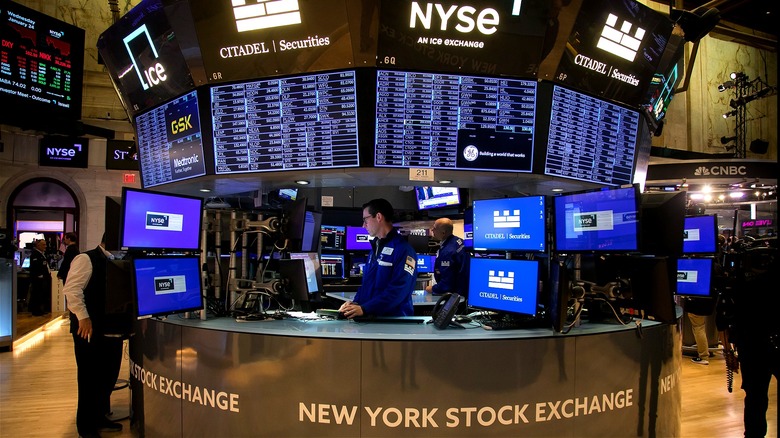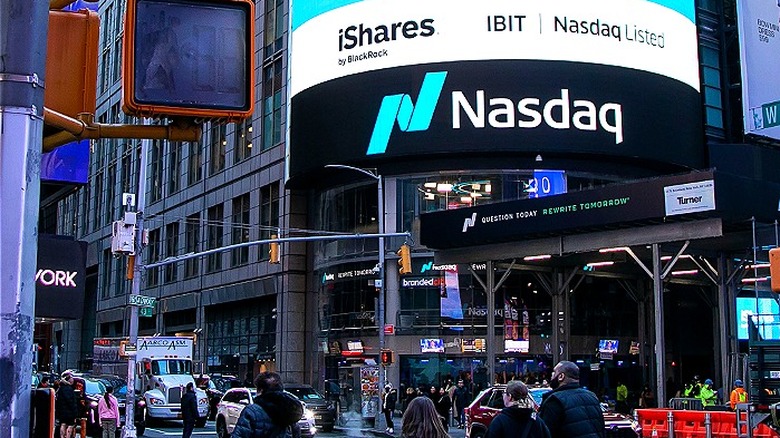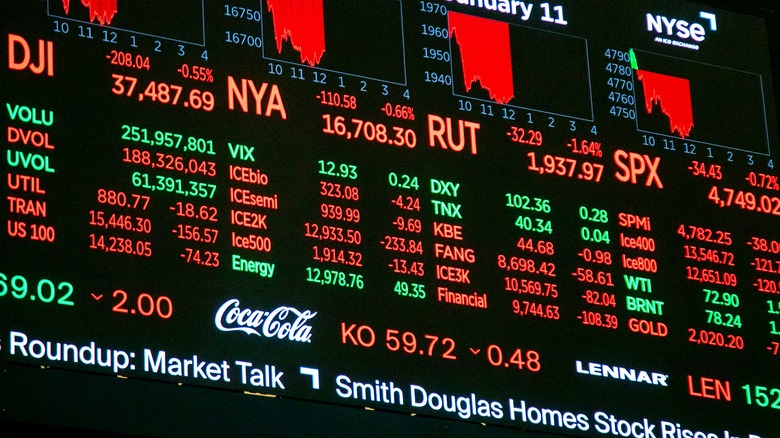What Does It Mean When A Stock Is Delisted?
To become listed on an exchange like Nasdaq or the New York Stock Exchange, it begins with an application. The approval process for listing is a time-consuming one, and the associated fees aren't cheap, though these fees vary by exchange. For example, the annual listing fee for Nasdaq is about 39% less than it is for the NYSE. This said, whatever exchange a company applies to be listed on, once listed, the company must continue to meet certain criteria in order to remain on the exchange. Should the company fail to meet these minimum requirements, it'll receive a warning. If, after this warning, the company still fails to meet the criteria, it'll get delisted — that is, the company's stock will no longer be listed on the exchange.
What does this mean for investors? For investors, a delisted stock is likely a sign a company is in serious financial trouble. It's possible for a company to voluntarily delist its stock, but in most cases, a stock is delisted by an exchange for noncompliance. Once off the exchange, the security can still be traded OTC — or over the counter. The OTC market is where smaller companies trade. However, this market is a dealer market, meaning share prices are set by what dealers are willing to pay. While many companies choose to be listed on the OTC market, a delisted company likely is only trading OTC because its value, and its stock, has plummeted. For example, a listing requirement for both Nasdaq and the New York Stock Exchange is a share price of at least $1.
Voluntary vs. mandatory delisting
As said, when a stock is delisted from an exchange, it's typically not a voluntary development. Its removal is because it was unable to meet the minimum listing requirements of that exchange. Other reasons for delisting, however, include bankruptcy or if a company ceases its operations. This said, a company may voluntarily delist its stock from an exchange if it's chosen to go private (e.g., when X, formerly known as Twitter, went private and delisted from the NYSE in November 2022) or if the company is part of a merger with another publicly traded company.
Mandatory delisting is more common. The most telling sign a company's stock is at risk of getting delisted is its share price. As noted, for both Nasdaq and the NYSE, the minimum share price for a security to remain listed is $1; if it closes below $1 for 30 business days in a row, the stock could be flagged for delisting. Once a noncompliance letter is sent, the company has six months to bring its stock back into compliance.
For Nasdaq, that means the stock must close at or above $1 for 10 consecutive days at least ("but, generally, no more than 20 consecutive business days"). For NYSE, the company's stock must close at or above $1 and have an average closing price not less than $1 over a consecutive 30-trading-day period. The NYSE also requires a company to issue a press release that informs its investors of its listing situation within four days of receiving its noncompliance letter.
Shareholders of a delisted stock
There's no rule that prevents a delisted stock from getting listed on an exchange like Nasdaq or the NYSE again. However, the chances of this happening are low, given that the company in question is likely closer to bankruptcy than it is to compliance with an exchange's high listing standards. With regard to a stock's value once it's delisted, as said, shareholders can still trade OTC, but this will be more difficult to do as the stock has become less liquid. If a company does go bankrupt, that's when its stock will lose its remaining value, meaning shares in the company will ultimately be worthless.
As mentioned, companies that receive noncompliance letters from exchanges need to inform their investors of the development. Even before this, though, it's likely investors can tell when a company is in danger of being delisted (i.e., its share price has closed below $1 consistently), at which time they'll probably look into getting something from their shares by selling, before the stock actually gets delisted and moves to the riskier, decentralized OTC market.


